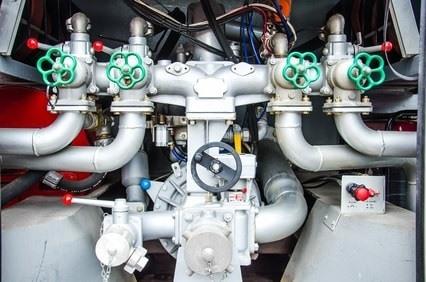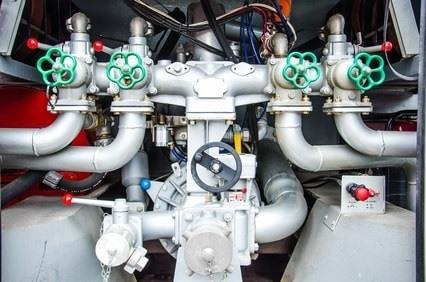How Does a Hydraulic Flow Control Valve Work? Function of Hydraulic Flow Control Valves, Types, Design Considerations, and More


Flow control valves are used to regulate the flow rate and pressure of liquids or gases through a pipeline. Flow control valves are essential for optimizing system performance, relying on a flow passage or port with a variable flow area. Here’s a look at the function of hydraulic flow control valves, the various types and components, and how they work, as well as some important considerations in selecting the appropriate hydraulic flow control valve for a specific application.
The purpose of a flow control valve is to regulate the flow rate in a specific portion of a hydraulic circuit. In hydraulic systems, they’re used to control the flow rate to motors and cylinders, thereby regulating the speed of those components.
Hydraulic flow control valves also control the rate of energy transfer at a given pressure. This is based on the physics concept surrounding work, energy, and power:
Actuator force x distance traveled = work done on load
The energy transfer must be equal to the total work done. Because the actuator speed determines the rate of energy transfer, speed is a function of the flow rate. Directional control valves serve a different purpose, directing the energy transfer system to the appropriate location at the appropriate time, although some pressure and flow rate control may be achieved using directional control valves, as they can throttle the flow of fluid.
There are a variety of flow control valve designs, with most intended for specific applications. Therefore, understanding how hydraulic flow control valves work is crucial in selecting the right valve for an application. The most common types of flow control valves include: 
The simplest flow control valves have an aperture which opens or closes in order to increase or slow down the flow rate. Ball valves are among the simplest options, consisting of a ball attached to a handle. The ball has a hole through the center, and when the handle is turned, the hole is aligned with valve openings in order to permit flow. In order to shut off the flow, the handle is used to turn the hole perpendicular to the valve openings, which obstructs the flow.
Other valve types function in a similar way with some mechanism for either permitting or blocking flow. A butterfly valve, for instance, has an internal metal plate attached to a turning mechanism. The plate opens or closes when the mechanism is turned. Needle valves, which are among the more precise valve options, have an adjustable needle and a valve stem which restricts or allows the flow of liquid. The needle can be adjusted to block the flow of fluid completely, allow the free flow of liquid, or partially obstruct the flow to varying degrees, therefore allowing for greater and more precise control over the flow rate.
When it comes to hydraulic circuits, there are a variety of options for controlling flow, ranging from the simple to the sophisticated, including hybrids that couple hydraulic valve actuation with sophisticated electronic controls. These options include:
Orifices represent the most simplistic hydraulic flow control valve option, in which an orifice is placed in series with a pump, either as a fixed orifice or a calibrated needle. Obstructing the orifice results in a decrease or blocked flow.
The more sophisticated options can sense pressure changes and respond accordingly, or monitor flow rate and respond when the flow rate exceeds a defined threshold. Pressure-compensated variable flow valves have a compensator which automatically adjusts to various load and inlet pressures to maintain a consistent rate of flow (with a typical accuracy within 3% to 5%). Add temperature compensation to the mix to account for variations in the viscosity of hydraulic oil (which is impacted by variations in temperature).
Hydraulic flow control valves provide a cost-effective solution to concerns surrounding the flow rate. However, they are not without their problems, leading to a loss of pressure when valves are partially obstructed, which can impact performance. With more basic flow control valves, changes in flow rate may occur even when the control valve is in a static position, due to system pressure, temperature (which alters the viscosity of some fluids), or other variables, leading to reliability concerns.
Selecting the right hydraulic flow control valve can address some of these concerns, although completely mitigating these issues may require a sophisticated control valve, such as a pressure- and temperature-compensated variable flow control valve.
In a hydraulic circuit, actuators are controlled by the flow control valve. In addition to the control valve, there are other variables that influence the flow rate, including temperature, pump output, and other factors. Designing an appropriate valve for an application requires careful consideration of the various factors that can influence performance, flow, and durability, such as:
Fluid density, along with minimum and maximum flow rates, are important to determine proper sizing for the valve, while the corrosive property of the liquid should be considered when selecting materials for the valve.
For more information on valve actuators and flow control valves, visit the following posts:
Our sales engineers are experts in automatic asset tracking, tagging and identification,a nd can answer all your questions. Get in touch now.
Lets Talk ›